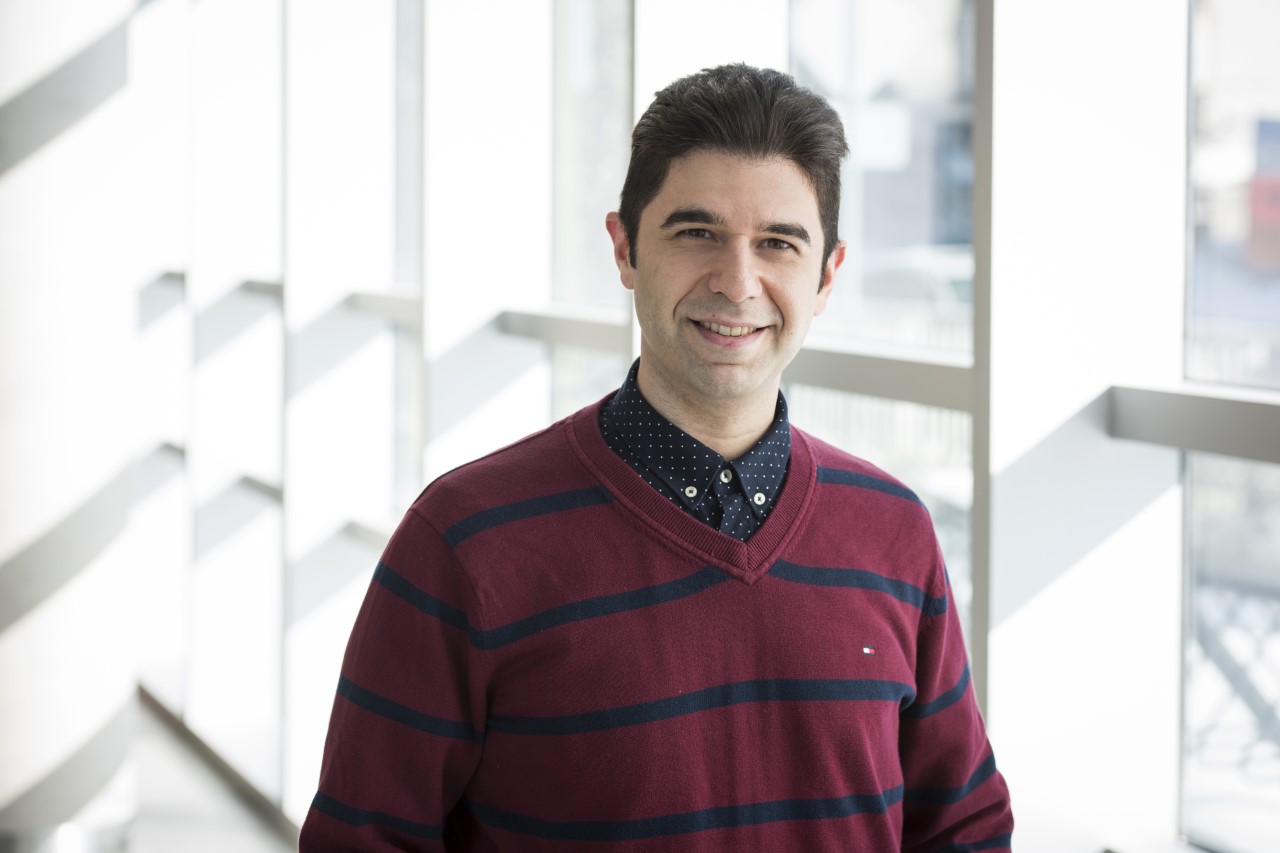Health Systems Management

- Details
- Category: Health Systems Management
Dean Stéphane Brutus joined his voice to PhD Jaason Geerts, Director, Research and Leadership Development at Canadian College of Health Leaders in this extract of The Globe And Mail opinion editorial published on the December 7th.
When Nova Scotia Tory leader Tim Houston surged to an upset victory in August, most commentators attributed his success to his promise to improve healthcare. His proposed solution was captured by one line of his platform: “We need more beds, more staff, and more technology.” To overcome the next wave of the pandemic and to improve healthcare, a basic variation of this theme is being proposed by every government. However, following the recent Canadian Institute for Health Information report that indicates that Canadian healthcare costs continue to surge exponentially, can anyone really believe that we will be better off simply with “more,” especially with no consensus ceiling to consider?
The context bearing down on us is a nation-wide healthcare human resources (health HR) crisis. The workforce is being depleted, with droves of nurses, physicians, personal support workers, and others who are suffering from burnout or PTSD, quitting their jobs in record numbers. According to Statistics Canada, the job vacancy rate in healthcare is at an all-time high, up more than 50% from last year.
Without question, the one and only resource needed to sustain and improve healthcare systems across the country is human: qualified and engaged health professionals. However, simply adding “boots on the ground” or superficial one-off financial incentives to attract staff---such as the Quebec government’s $18,000 bonuses for nurses---will unfortunately not succeed.
The singular and all-consuming pandemic response during the peak periods has left hundreds of thousands of Canadians waiting anxiously for potentially life-saving diagnostic testing, surgical procedures that were deemed non-urgent, and a host of consultations and basic health services. These must now be reintroduced alongside regular day-to-day operations, led by a dwindling, traumatized, and exhausted workforce. The solution is not, as Dr. Andy Smith, CEO of Sunnybrook Health Sciences Centre, suggests, to ask everyone to work 130% until we’ve caught up, which will likely take years – and at what cost?
The first step in solving the crisis is counterintuitive in that we need to invest time in formally debriefing the experiences of the pandemic thus far, lest they go to waste. This means asking leaders and staff at all levels, patients, families, and communities: where did we get it right? Who was under-serviced or treated inequitably? What systemic improvements are within our reach? Prioritizing the time to do this is crucial.
Second, the keys to solving many of our problems lie in the data, the terabytes of information on patient experience, clinical outcomes, and staff engagement that are waiting patiently in servers to be mined and analyzed. Healthcare leaders need to be equipped with the tools, competencies, and again, the time, to continuously analyze this information and make informed decisions for systems improvement.
Third, these decisions must be considered through the lens of the whole system – including its workforce, patients, communities, and continuum of care – as opposed to just a single element at the expense of others. For example, increasing the number of hours worked by individual nurses and physicians can also increase their fatigue, absenteeism, and turnover, as well as medical errors, all of which diminish the overall performance of the health system. Similarly, giving key personnel one-time bonuses, as is done in Quebec for nurses, will only momentarily prolong the inevitable once this same personnel returns to the same chaotic workplace conditions.
The responsibility of carving out time and space to reflect, to dig into the data, and to address issues in a systemic way does not belong to front line workers; their jobs are to saves lives. It is their leaders and more specifically, middle-level health care managers, who sit in the sweet spot to enact change. It is they who require a mindset of agility, adaptability, and innovation to extricate time for reflection, to look at data, and to propose systemic solutions. Since the early months of 2020, front-line healthcare workers have been front and centre in our minds and in our politics. As we look for a path forward, it is time to shift our focus up the organizational chart and provide support to those who will be the ultimate catalysts of improved healthcare.

- Details
- Category: Health Systems Management
Telfer PhD candidate, Peyman Varshoei, started his doctoral journey in 2017 when he moved from Iran to Ottawa. Since then, he has started on his three-chaptered thesis for his PhD in Management with a Specialization in Health Systems. He met his wife (Elmira Mirbahaeddin) who is also a doctoral candidate in the same PhD program at Telfer School.
The focus of his research relates to various medical scheduling problems which includes patient appointment scheduling, staff scheduling, clinic block scheduling, home-care nurse scheduling, routing, and more. After the onset of the COVID-19 pandemic, the importance of his research became evident more than ever. His research contributes by strengthening pandemic-wave recovery through preventing extreme back-log of elective surgeries cancelled during the earlier waves of COVID-19.
Becoming a Telfer PhD Student
Peyman was connected with the Telfer PhD program when he was consulting a graduate student who was working on her master's degree project in Iran. Through this project he was introduced to professor Jonathan Patrick.
“[Professor Patrick] encouraged me to apply to the PhD program at Telfer School, I heard about Telfer before, and I knew it has generous packages for international students and also has powerful computer labs that could facilitate my research” explained Peyman. “It was a pleasure for me to apply and be admitted to Telfer.”

“I chose to do my PhD in Management with the Specialization in Health Systems because I did some research in that area during my undergraduate and graduate years in Iran. I was searching for opportunities to expand my knowledge in advanced analytics techniques, and to also explore the connections between my area of interest with health systems management.”
His educational background and eagerness to learn drove him to research newer topics such as business optimization and medical scheduling.
“I have always been passionate to work on innovative ideas that optimize health systems. . So, choosing this PhD program and focusing on the optimization of scheduling in health care services gave me the opportunity to enhance my skills and apply my knowledge to health care problems in the real world.”
Learning and skills acquisition
Peyman has been keen on developing his ability to learn how to learn. By challenging himself with new topics and problems, he managed to exercise many learning curves.
“I’m learning things everyday non-stop. I need to improve my skills regularly, so I am trying to explore new ways that I can quickly learn. I am happy with everything that I have explored throughout my research,” he states as he emphasizes the importance of getting out of his comfort zone to enhance and advancehis skillset while obtaining his PhD.
Peyman faced many challenges that he overcame by adopting an open mind with curiosity. He explained “I explored a lot in the literature because I didn’t have a broad background in optimization. My background was mostly in simulation modeling” he adds: “I had to find a way to solve new optimization problems during my research. For example, in my first chapter, I had to figure out how to make a trade-off between two or more conflicting objectives through connecting a stochastic and a deterministic optimization model and spent days figuring out how to do it. I learned new programming languages as well as several solution methods for addressing the problems that I am working on.”
Working with supervisors
His main resource for obtaining new knowledge, he said, was access to professors and researchers who were knowledgeable and willing to advise him during his research in the areas that he was interested in. In addition to his supervisors, Peyman had the opportunity to engage in research and teaching activities with the other Telfer faculty members. Therefore, he has been able to further expand his experience through various research projects as well as teaching undergraduate courses. Peyman refers to the faculties at Telfer: “they made my PhD program even more fruitful by generously sharing their professional experience and knowledge in research with me.”
Professor Jonathan Patrick, also commented on Peyman’s enthusiasm towards learning: “One of the real pleasures about working with Peyman is his willingness to take on new tasks and learn new methods and/or software. He is not afraid to tackle new methodologies and readily asks for guidance if he is uncertain. These characteristics of his will stand him in good stead as he continues in his career as a researcher.”
During the first two years of PhD, Peyman went through his coursework. He explained: “My supervisors supported me in many ways, for example, in choosing the right method courses and the other ups and downs that an international newcomer PhD student from another educational system might face with. Moreover, they guided me to the additional skills and methods that I needed to prepare for my comprehensive exam and my thesis program of research. I believe this individualized support has been of great importance for the progress of my thesis research.”
Being a PhD Student During COVID-19
Researching a Pandemic from Home
When the pandemic hit in 2020, Peyman, like many, was unsure how his education journey would continue. However, it turned out to be the pandemic itself that led him to develop what would be the first chapter of his thesis.
“While I was exploring different home care problems in the literature to start developing the first optimization problem in my thesis, the pandemic started. We identified a new problem about admitting elective patients to hospitals during pandemics, which later became my first chapter. The problem was how to admit elective patients in a hospital during a pandemic while ensuring the hospitals are ready to empty some capacity for pandemic patients in case of a surge in the pandemic-driven demand” explained Peyman. This problem became evident after the first wave of COVID-19 hit and hospitals faced massive backlogs of elective surgeries because of the cancellations.

Peyman put his focus on this new topic, despite the uncertainty around the topic and its solution method. His COVID-19 research was pursued in pandemic-style: at home.
“I was at home all the time during the pandemic. I followed the news that was relevant to my research.” shared Peyman. He specified that because it was a novel problem in the literature, he had a lot to delve into when working from home. “I read the news a lot, I searched for keywords and specific news articles. I worked hard to develop a new methodology.”
Eventually, he was able to develop a solution to this issue: an elective patient scheduling policy that would allow admitting patients during the pandemic waves while ensuring the hospital can empty enough beds for pandemic patients over a short warning period.
Managing the Impact of Future COVID-19 Waves
With his research Peyman hopes to lessen the negative impact of COVID-19 and other pandemic waves in the future.
“We may see more covid waves later. In the future, we can benefit from the lessons learned during the first wave and I believe the findings of my research can help hospitals to minimize cancellations.” he explained.
The model would help hospitals to adapt quicker and more efficiently than the first wave of COVID-19, allowing for a faster post-pandemic recovery.
Participating in Conferences
When Peyman progressed with his research and developed the structure for the forthcoming chapters, his supervisors invited him to present the findings of his first chapter at the Canadian Operational Research Society (CORS) 2021 annual conference. “This was a great opportunity for me to share this research and to get feedback from the participants and experts in this area. Happily, we received encouraging comments from the audience, especially about the novelty and timeliness of the topic as well as the innovative method that was developed” He said. Peyman also presented in 2021 annual Canadian Association for Health Services and Policy Research (CAHSPR) conference.
Finishing a Thesis
Peyman states that the main goal of his research is “making a balance between the needs of patients and the utilization of health-care resources and to find an optimal/near-optimal solution”. He keeps that in mind as he works towards finishing the next chapters of his thesis.
His next steps will include delving deeper into solution methods for the complex problems he is trying to solve in home-care nurse scheduling and routing problem and cancer clinics block scheduling.
“I am going to develop a heuristic/metaheuristic method that is able to provide a good quality solution in a reasonable time, which is what operations research analysts do when it is impossible to reach the optimal solution for combinatorial mathematical problems.”
The impact of his research is not only applicable now more than ever but could change the efficiency of planning and scheduling within the Canadian health care system for the better.

- Details
- Category: Health Systems Management
Written by Mirou Jaana, professor and director of the Masters in Health Administration program at Telfer School of Management, University of Ottawa. This article was originally published on Policy Options on May 5, 2021.
It is impossible to imagine our world today without internet, digital transactions, video conferencing or exchanges with family and colleagues via a computer or mobile device. Yet, we still live with the idea of our health care system lacking seamless electronic information exchange between health care organizations, providers and patients. Although some progress has been made on this front, this is a reality that persists to varying degrees today.
It has been a journey of a thousand miles. Health care has been closely accompanying the journey of digital connectivity but has kept shy from fully riding the wave. The reasons may vary depending on the perspectives of different stakeholders, but one constant stands: it is difficult to fully assess and understand the state of digital connectivity in our health care system today.
If we think of the health care system as a spider web, we can find parts of this web that are well constructed and connected, whereas other sections are still missing essential threads. In Canada, there are significant variations between and within provinces and territories in digital health connectivity and the inherently complex nature of the health care system further complicates the situation. This complexity is manifested by a dual provincial/territorial and federal jurisdiction with well institutionalized policies, funding and reimbursement structures; a digital divide across more than one dimension – rural vs. urban, older vs. younger generation, diverse social conditions; and a perplexing fragmentation of health services.
Following the early national IT efforts in Canada in late 1990’s, Canada Health Infoway (CHI), an independent not-for-profit organization funded by the federal government, was established in 2001 with a mandate to lead the national IT efforts. This included the development of an interoperable electronic health record for all Canadians. Since its inception, CHI received $2.45 billion in federal funding and played an active and important role as a strategic investor in health IT projects across provinces and territories, which contributed to improved digital connectivity. These investments evolved over time and expanded in scope from infrastructure-related projects to projects focusing on digital tools used by clinicians, as well as applications allowing patients themselves to collect, retrieve, and manage their health-related data.
We have come a long way as a society on the digital connectivity front in general. According to Statistics Canada, 88 per cent of Canadians and 60 per cent of those 65 years and over have a smartphone. Most Canadians (91 per cent) use the Internet and 75 per cent also use social networking websites and apps.
A recent study showed that around 40 per cent of Canadians track one or more aspect of their health using connected care technologies. This attests to the growing demand for digital connectivity in health care. In turn, health care organizations have been increasingly implementing new systems and technologies at the point of care that support digital connectivity. Around 85 per cent of medical practices are using electronic medical records (EMRs), and hospitals have accelerated the implementation of comprehensive EMRs that replace existing non-integrated systems. For instance, The Ottawa Hospital, in partnership with five other organizations in the Ottawa region, opted for the same EMR system, which will enable timely information sharing, and better connectivity and integration of care.
According to CHI, telehealth use has also grown over time reaching 1.5 million consultations a year, yet this still represents a relatively small portion of the overall health services. Since 2019, two initiatives emerged that aim at improving connectivity in relation to e-prescribing and supporting patients’ access to their health information through patient portals. These initiatives however remain in their early stages, with considerable variation in deployment between and within provinces.
Despite the progress made, considerable challenges and gaps persist. At the patient level, access to health information is limited. Unless receiving care from the same organization, or an integrated system or network of health care providers, a patient navigating the health care system often finds the onus is on them to communicate all relevant information related to their medical history, profile, and medications at each point of care. This is particularly challenging in the case of the elderly with chronic conditions who frequently interact with and move through the health care system.
A recent study on mobile health technology use among people 65 years and older compared to the general adult population reveals that the majority of Canadians using mobile applications and wearables, like smart watches and wristbands for health self-tracking, do not share the data with their health care providers. Enrollment in telehomecare programs for chronic conditions management also remains limited despite the wealth of research evidence demonstrating its effectiveness in reducing hospitalizations and mortality rates, and improving the clinical condition of patients. The success in the integration of pilot telehomecare programs in the standard care, similar to one at the University of Ottawa Heart Institute, is minimal.
According to the Canadian Medical Association, limited system interoperability and information integration across the spectrum of care persist. EMRs implementation progressed, but only a small proportion of Canadian medical practices support electronic communication with patients. For example, few medical practices provide electronic appointment requests or prescription refills. Communication of information between general practitioners and specialists, or hospitals and nursing homes, and the sharing of clinical summaries or test results is limited and inconsistent.
In addition, hospitals within the same city that may transfer or refer patients to one another may have EMRs systems that cannot communicate. Most importantly, digital connectivity in the context of long-term and senior care is minimal. The recent COVID-19 pandemic brought to light the dire challenges observed in these settings in relation to connecting the elderly to family, caregivers, and health care providers. It also highlighted existing issues in capturing and sharing timely relevant clinical information with other health care organizations.
The obvious question is where do we go from here? At this stage, regrouping and understanding our current state is instrumental in shaping the decisions that we make regarding the future state of digital connectivity in health care.
A wealth of experience and evidence from over 20 years of health IT projects across all provinces is available. It is our responsibility to leverage this knowledge to inform policy and practical changes, and to apply evidence-based management principles as we plan for the next steps. Federal leadership is critical to endorse a strategic planning exercise at the national level and enable the necessary policy and regulation changes to support it. The Canadian government can play an important role in advancing the digital health agenda through incentives and policies that can catalyze national changes to address the digital divide and current gaps.
In times of crises, we discover our limitations as well as our capabilities. The current pandemic demonstrated that the health care system can be agile and can adapt fast when needed. In response to COVID-19, health care delivery changed overnight in Canada. We broke the inertia and shifted to various forms of virtual care throughout the country that were considered unrealizable prior to the pandemic. Provincial health authorities implemented fee schedule codes to cover virtual health services in a timely response. It was a call for action and the health care system and health authorities responded. However, this crisis also revealed our health care system’s “Achilles heel” – long-term and senior community care, which would greatly benefit from digital connectivity.
It is time for health care to fully ride the digital connectivity wave. A pan-Canadian reform that formally integrates virtual care and connectivity in the discussion on the future of health care is merited. This is a journey of a thousand miles in health care, but we have already started it.
This article is part of the Digital Connectivity in the COVID Era and Beyond special feature.
This article first appeared on Policy Options and is republished here under a Creative Commons license.

- Details
- Category: Health Systems Management
Our Master of Health Administration (MHA) students are shaping a healthier debate with their final assignment as part of the Health Care in Canada course (MHA6360). This course, led by Assistant Professor Agnes Grudniewicz, consists of an interesting project as the final class assignment which involves an online publication opportunity. The students were to prepare an opinion article on a chosen topic of interest with the ultimate objective of being published in Healthy Debate, a Canadian online publication that aims to provide easy-to-understand information about the health care system.
An opportunity to make an impact beyond the classroom
Professor Grudniewicz first came across the Healthy Debate online platform during her PhD studies since their editorial office was based at Toronto’s St. Michael’s Hospital where she was conducting her research.
“The idea to include Healthy Debate as an applied learning opportunity came to me this summer, while planning the first online delivery of the course due to the pandemic. I simply decided to reach out to them,” she added. “They were very enthused about the idea as it aligned with their new goal of using their platform as an educational opportunity.”
The experience of writing for Healthy Debate
For the assignment, students were expected to follow all guidelines to write an opinion article as outlined on Healthy Debate’s website. Students had the chance to read previous opinion pieces to understand the tone and style of these short-type articles.
Ranging from 650 to 900 words, the opinion articles are far more challenging to write than usual longer research papers since ideas, fact-based content and argumentative information needs to be concise. “It was a challenging exercise because they had to adapt to the style of Healthy Debate, which is very different from more academic writing. It’s punchy and short. Students had to think about ways to write about a niche topic to a broader audience, using lay terms and explaining concepts,” stated Professor Grudniewicz.
Students had the opportunity to consult with the editors at Healthy Debate regarding their topic and work with them to submit the article for publication. This consultation and submission to Health Debate was an optional component of the assignment, but students were strongly encouraged to make use of this fantastic opportunity to strengthen their assignments, as their article is expected to be of high enough quality to be submitted to Healthy Debate for publication after they are graded.
“The Healthy Debate assignment was a great learning experience as we got the chance to pick a health subject of our choice. We felt proud to share our opinion with a broad range audience and bring awareness about mental health in these COVID-19 times,” shared MSc in Health Systems students Mohcene Abdessemed and Sandra Blais-Amyot, co-authors of the now published opinion piece Pandemic, winter taking toll on Canadians’ mental health. “We had the opportunity to interview a mental health professional to gather his insight on the current situation. We found the course professor and the Healthy Debate editors to be very helpful in providing constructive feedback that guided and strengthened our article.”
The assignment was also followed by a requirement to create a 10-minute podcast where one student interviews another on the topic of their Healthy Debate article. “Students did tremendously well on this component, surprising me with their creativity and enthusiasm,” exclaimed Professor Grudniewicz.
Lesson learned
"Publishing in Healthy Debate was a great opportunity to collaborate with a colleague and add our expertise to a topic that we're both passionate about. It allowed us to not only apply the course content to a real-life policy issue, but to also use our respective professional backgrounds to bring our different perspectives to the issue." shared MHA student Joey Taylor, one of the co-authors of It’s time to get moving, Canada.
“I think it was a great experience for these students because they got to pick a topic that was important to them – either because of personal experience or because a topic we covered in class sparked a new interest” reports Professor Grudniewicz. She concluded: “the MHA trains our future health care leaders. In this assignment, I wanted to give our MHA students the opportunity to join the conversation and have their voice heard on topics that mean the most to them. I hope having their work published inspires them to continue to actively engage in health policy discussions for the betterment of our health care systems.”
Read each of our MHA students’ articles published by the Healthy Debate:

‘Cure sometimes, treat often, comfort always’: The importance of support networks, by Brent Leonard
Addressing racism in Indigenous health – Moving beyond systemic reassurance, by Amanda Larocque and Maddie Venables
Fighting fire with fire: Managed Alcohol Programs need to be widely implemented, by Steven Parker and Erin Tighe
It’s time to get moving, Canada, by Joey Taylor and Talia Ignacy
CANZUK: A cure for our healthcare challenges?, by Anna Wu and Priyank Tyagi
Pandemic, winter taking toll on Canadians’ mental health, by Mohcene Abdessemed and Sandra Blais-Amyot

- Details
- Category: Health Systems Management
A first-of-its-kind Canada-wide survey of seniors’ health technology-related behavior.
Project title
IT Innovation and the Elderly: Technology Acceptance and Use in the Community
Researcher
Mirou Jaana, Telfer School
Grant supporting this research
SSHRC Insight
Period
2017-2020
Professor Mirou Jaana has launched a new study, funded by the Social Sciences and Humanities Research Council (SSHRC), which will provide national data on seniors’ attitudes and behaviors towards health information technology solutions.
Telemonitoring (aka telehomecare) technologies have been around for decades, but little is known empirically about the factors that lead to the acceptance and use of these solutions by seniors. Professor Mirou Jaana says having a better understanding of these factors would assist healthcare providers and policy-makers to develop guidelines that support the integration and optimal use of these solutions for the greatest benefit of patients.
In the first part of her study, she and her colleagues are conducting a Canada-wide survey of seniors that assesses their technology-related attitudes and behaviors. The survey will consider a variety of general e-health applications, as well as specific home-based technologies, that have gained increased attention in recent years, such as smart watches. In the second part of the study, professor Jaana and her team will investigate the factors that affect the acceptance and use of telemonitoring technologies by seniors.
While the features and convenience of these technologies continue to evolve, their basic telemonitoring functions actually haven’t changed all that much, says professor Jaana. “Their essential purpose is to connect a healthcare provider or case manager to a patient who lives in the community (e.g., at home or in a retirement home), and requires close attention and monitoring.” As an example, a patient being monitored for a heart failure condition may use telemonitoring to transmit information such as a change in her or his weight. The nurse could potentially consult with the patient’s physician, and adjust his/her medications accordingly. This early detection of deterioration in a patient’s condition presents important benefits by preventing risky complications and avoiding unnecessary time-consuming hospital visits. This is especially relevant in the case of elderly patients.
Professor Jaana’s new study, focusing on technology acceptance factors, will build on the findings of her previous research which revealed that telemonitoring had significant positive impacts on senior patients’ self-care skills and it benefited them in relation to their chronic disease management. “By focusing on acceptance factors related to these technologies, our research is uncovering potential barriers/facilitators that may enable more effective use of telemonitoring among senior patients with unstable conditions.’’ Identifying in their health status, which they often would not notice on their own, supports timely intervention before complications arise requiring a hospital visit.
“The field of telemonitoring is maturing, but what’s still missing is the empirical insight into how these technologies should be incorporated as part of care guidelines,” professor Jaana contends. “With the continuously growing population of elderly living in the community, it is our responsibility to understand their needs, and leverage existing tools and technologies, like telehomecare applications, to support them in the community.”
- Details
- Category: Health Systems Management
Craig Kuziemsky tackled the unintended benefits of introducing health information systems (HIS) at the European Medical Informatics Conference in Pisa, Italy on Aug. 27. Professor Kuziemsky and a team of researchers from Canada, Denmark, and Australia used several case studies of HIS implementation to develop a model of unintended benefits of HIS usage with three categories of benefits: patient, service delivery and administrative. They also examined the implications of these benefits on the design and evaluation of HISs. The benefits were not visible until after these systems were used in real clinical situations and settings. This was in contrast to studies of negative consequences of HIS implementation, which are often easier to identify because they raise issues which tend to draw immediate attention.

